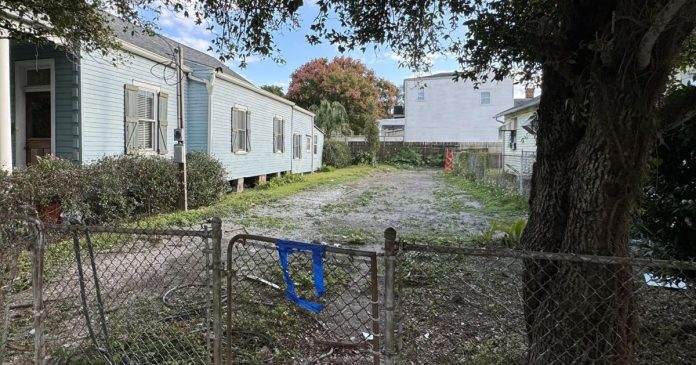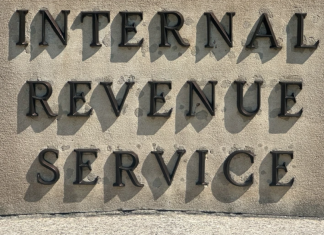New Orleans City Council members and other regulatory officials are calling for tougher fines for those who demolish historic structures without a permit, after the recent demolition of a century-old shotgun Uptown underscored the need for tougher rules.
The fine for illegally razing historic homes and buildings in New Orleans is $25,000, more than double the $10,000 that was on the books before state lawmakers increased it starting in 2022. In the three years since, some regulators say, they’ve questioned whether the new, higher fine should be increased again.
“We felt like that was the cost of doing business,” said Historic District Landmarks Commission Executive Director Bryan Block at a City Council budget hearing last month, speaking about the original $10,000 fine. “We thought that $25,000 would discourage (property owners from demolition), but we’re seeing that it’s not.”
The issue came to the fore this summer, when New Orleans real estate developer and agent Michael Moore sought permission to demolish a house he owned on Camp Street near Napoleon Avenue. Both the HDLC and the City Council denied his request for a demolition permit, according to testimony from the meetings.
Moore tore it down anyway, saying that he was concerned about the structural integrity of the home, which had termite damage. He now says he regrets the move.
“I take full responsibility for the decision I made,” Moore said in a text message last week. “In hindsight, my decision was not the right one.”
The dispute comes as preservationists and longtime residents of the city’s older neighborhoods try to balance maintaining the historic structures that make their neighborhoods unique while keeping housing affordable.

Former New Orleans City Council member Kristin Gisleson Palmer is the new Executive Director of the Preservation Resource Center.
“The city has always had difficulty in certain neighborhoods with demolitions, because a lot of developers will do a cost-benefit analysis, and realize how much money they can make if they just tear something down and start from scratch,” said Kristin Gisleson Palmer, executive director of the Preservation Resource Center.
Inside the Camp Street home
In a city with hundreds of 18th and 19th-century structures, the single-family shotgun once located at 4854 Camp St. was not particularly noteworthy. But at around 100 years old, it met the criteria for a historic structure and had its original flooring, mantels and fireplaces.
Moore acknowledged at a July hearing before the HDLC, while requesting a demolition permit, that renovation would be possible, according to testimony from the meeting. But he also said it would be easier to rebuild a new house on the lot than preserve the old one.
The HDLC denied his request, citing the home’s original fixtures and deeming it “structurally sound.”
In August, he appealed the denial to City Council, which unanimously upheld the HDLC decision. District B Council member Lesli Harris said at the meeting that the HDLC’s findings underscored the importance of preserving even modest shotguns to maintain the neighborhood’s historic and diverse makeup.

New Orleans City Council member Lesli Harris.
In late August, Moore demolished the house, a move he now says was a mistake. The HDLC responded by fining him $25,000, the maximum allowable penalty under state law.
“I’m truthfully very speechless that both this commission denied the demolition request as well as the council and that you premeditated the demolition and went ahead and proceeded with it,” commissioner Jennie Cannon West told Moore at its September meeting. “I would not like to see you here again.”
In addition to the fine, the HDLC required that Moore construct a new house on the site that closely replicated the architectural style of the former structure, Block said.
“I fully understand that proceeding without the proper HDLC approval was a serious mistake and I take full responsibility for it,” Moore said after apologizing to the Commission on Oct. 17, according to a recording of an HDLC meeting.
What’s next?
In a city with a housing shortage and looming threats to historic properties, advocates for historic properties say the Camp Street story is an example of why tougher fines might be needed. Though preservationists say the tearing down of historic structures is not a widespread problem, the recent situation underscores why the penalty on the books could be toughened.
Ahead of next spring’s regular legislative session, Harris said she hopes to meet with state lawmakers and will urge them to draft legislation that would further increase the fine.
New Orleans state Rep. Aimee Adatto Freeman, a Democrat who sponsored the 2022 bill that increased the fine for unlawful demolitions, said the problem isn’t necessarily what’s on the books.

State Rep. Aimee Freeman, D-New Orleans, talks during testimony on House Bill 542, regarding K-12 participation of transgender youth in women’s sports, in the House Education Committee May 4.
“The problem that I have found is that you can pass a law, but if the enforcing agency and the executive branch don’t enforce it, I can’t force them to,” she said.
City regulators do not disagree that enforcement is an issue. But they say there are reasons why it’s hard to hold violators’ feet to the fire. For instance, there are different definitions of “demolition” and different penalties depending on the neighborhood. What’s more, the fines are imposed at the state level, not the city.
To help address some of those issues, the PRC is studying how other cities’ historic districts use local laws to prevent demolitions.
For months, the PRC has collected data on the last two decades of permitted demolitions to bolster future legislative reform. They plan to have a report finished by 2026, just in time for the next legislative session.
“How do we ensure that when something like this happens, that is there a way to put in a process where the developer can’t make money off of illicit behavior?” Gisleson Palmer asked.








